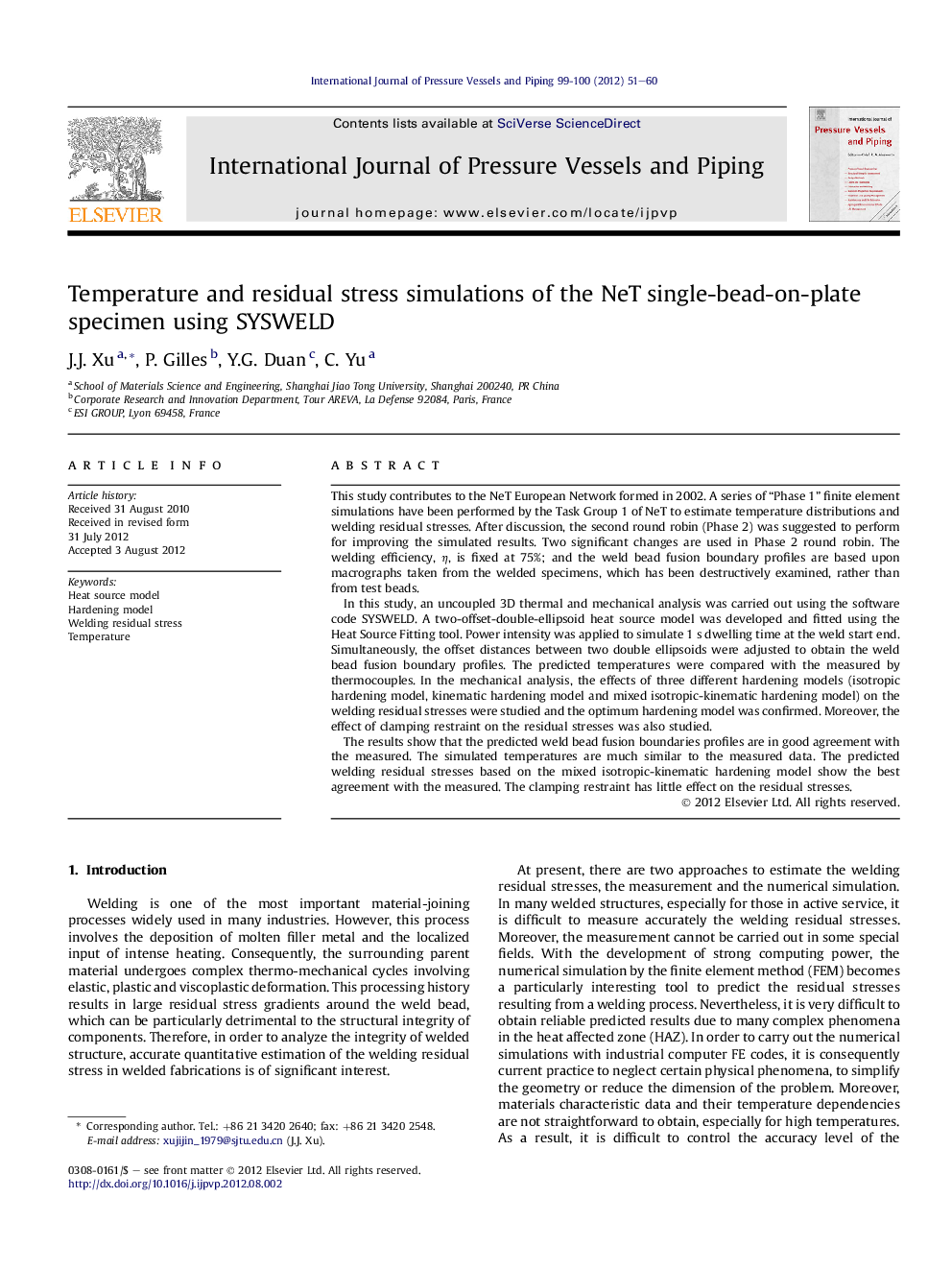| کد مقاله | کد نشریه | سال انتشار | مقاله انگلیسی | نسخه تمام متن |
|---|---|---|---|---|
| 788457 | 1466089 | 2012 | 10 صفحه PDF | دانلود رایگان |

This study contributes to the NeT European Network formed in 2002. A series of “Phase 1” finite element simulations have been performed by the Task Group 1 of NeT to estimate temperature distributions and welding residual stresses. After discussion, the second round robin (Phase 2) was suggested to perform for improving the simulated results. Two significant changes are used in Phase 2 round robin. The welding efficiency, η, is fixed at 75%; and the weld bead fusion boundary profiles are based upon macrographs taken from the welded specimens, which has been destructively examined, rather than from test beads.In this study, an uncoupled 3D thermal and mechanical analysis was carried out using the software code SYSWELD. A two-offset-double-ellipsoid heat source model was developed and fitted using the Heat Source Fitting tool. Power intensity was applied to simulate 1 s dwelling time at the weld start end. Simultaneously, the offset distances between two double ellipsoids were adjusted to obtain the weld bead fusion boundary profiles. The predicted temperatures were compared with the measured by thermocouples. In the mechanical analysis, the effects of three different hardening models (isotropic hardening model, kinematic hardening model and mixed isotropic-kinematic hardening model) on the welding residual stresses were studied and the optimum hardening model was confirmed. Moreover, the effect of clamping restraint on the residual stresses was also studied.The results show that the predicted weld bead fusion boundaries profiles are in good agreement with the measured. The simulated temperatures are much similar to the measured data. The predicted welding residual stresses based on the mixed isotropic-kinematic hardening model show the best agreement with the measured. The clamping restraint has little effect on the residual stresses.
► Two-offset-double-ellipsoid model was developed to predict welding thermal process.
► Material hardening model has an important effect on the welding residual stress.
► Welding residual stresses were predicted accurately using mixed hardening model.
► The clamping restraint has little effect on the welding residual stresses.
Journal: International Journal of Pressure Vessels and Piping - Volumes 99–100, November–December 2012, Pages 51–60